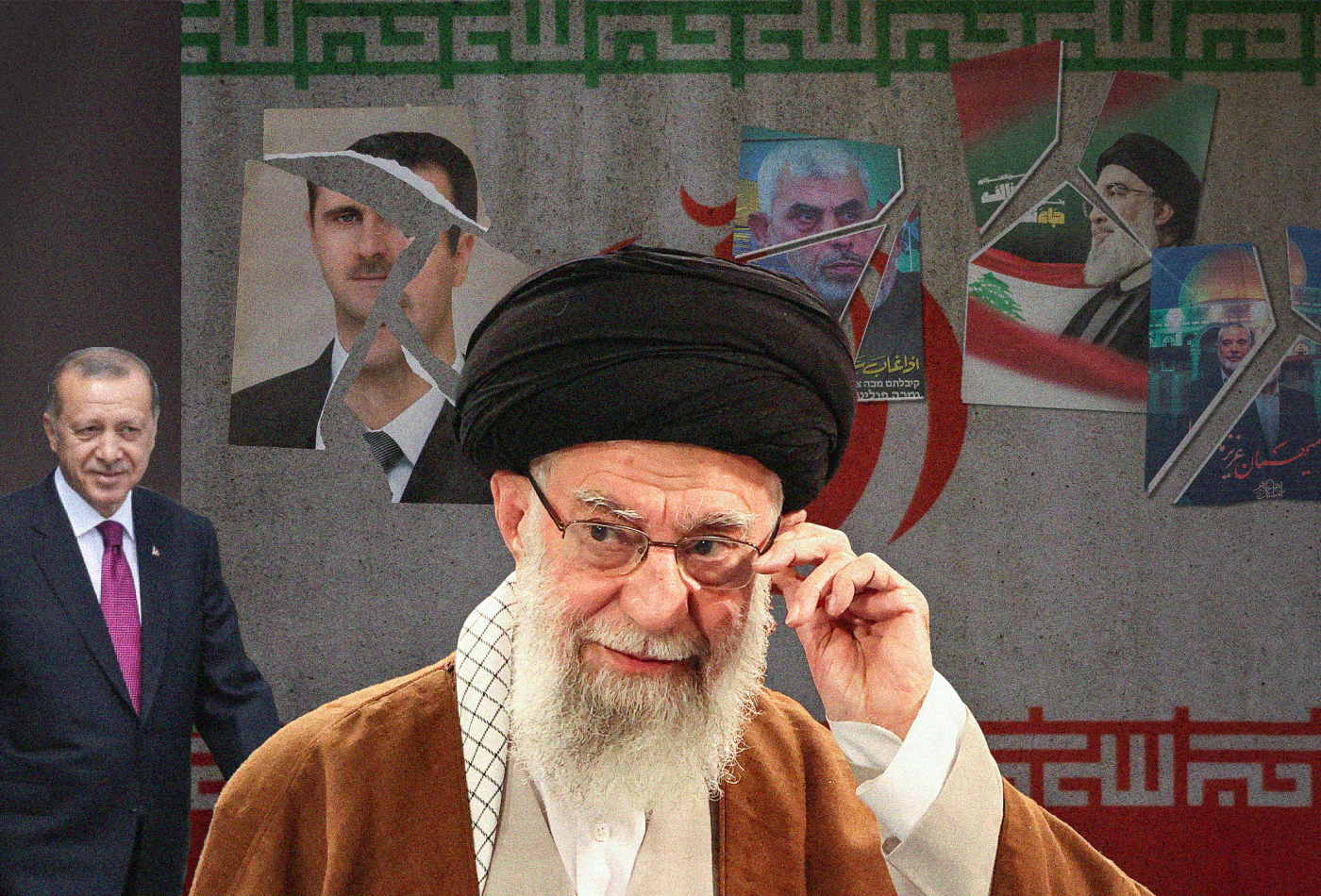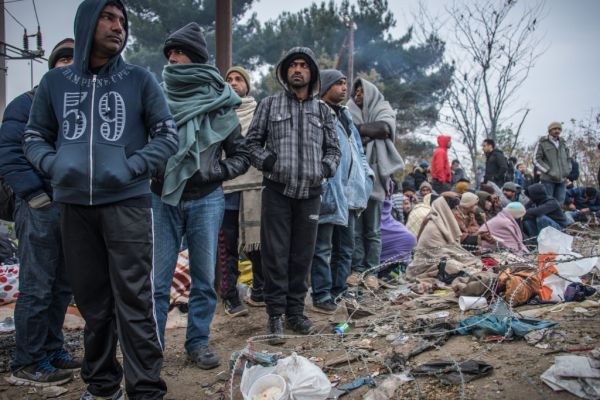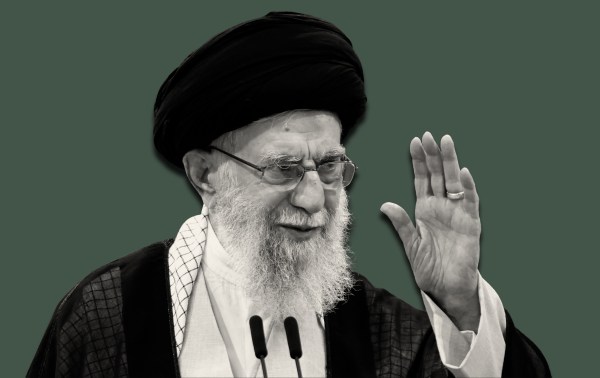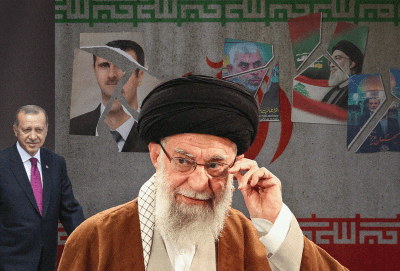On October 6, 2023, the Islamic Republic’s supreme leader, Ali Khamenei, could have done a tour d’horizon of the Middle East and been proud. His anti-Israeli/anti-American battle plan was working. An array of Shiite and Palestinian Sunni Islamist militias—the Houthis in Yemen, Hamas in Gaza, Hezbollah in Lebanon, and a smorgasbord of militant groups in Iraq—had effectively given Iran imperial reach at relatively little cost.
Through this “Axis of Resistance,” the clerical regime could harass Americans in Iraq and Syria. Ever fearful of escalation, Washington never took the fight back to Iran directly—with the exception of President Donald Trump’s decision in 2020 to kill in Baghdad Qassem Suleimani, the commander of the Islamic Revolutionary Guard Corps’ Quds Force and the operational mastermind behind Iranian strategy. The axis was designed to keep America fatigued in the Middle East, to keep it leery of deeper intervention. Similarly, the alliance intended to complicate Israeli calculations, to keep Jerusalem from “mowing the lawn”—the routine pummeling of Israel’s nearest foes—for fear that military escalation against one party might trigger a wider conflict. With time, the axis would only get stronger; the Zionists and Americans weaker. For years, this approach worked.
The key component in Iranian calculations was Tehran’s decision over the last 10 years to enhance Hezbollah’s already large stockpile of missiles. It gave the clerical regime—in the eyes of the Iranians, the Hezbollah leadership, and many Israelis and Americans—a check on Jerusalem and Washington. It’s not clear how much Khamenei feared an Israeli preemptive strike on Iran’s nuclear sites before October 7; even under President Joe Biden, the potential of American power probably still made Khamenei worry about the possibility of U.S. preemption. It’s a good guess that his decision in the last four years to increase substantially uranium enrichment and undertake other experiments key to constructing an atomic device, but not rush toward a nuclear test, reflected his concern about too much provocation too quickly. Hezbollah’s missile stockpiles—along with the entire Axis of Resistance and the mayhem it could cause—gave Iran some leverage in its test of wills with Washington and Jerusalem.
Beyond the Levant, the success of Iran’s axis was enormous, especially in the Gulf. The Saudi kingdom’s vast oil infrastructure and the massive development plans—the NEOM projects—of the Saudi crown prince, Muhammad bin Salman, were wide open to the missiles and drones that Iran had spent vast sums on. Houthis, increasingly well-armed by the Islamic Republic, had often taken great pleasure in attacking Saudi Arabia. The Iranian-led attack on Gulf shipping and the Saudi oil facilities at Khurais and Buqayq in 2019, which Trump declined to respond to militarily, undermined MBS’ confidence in U.S. security guarantees. President Biden’s flip-flops on Saudi Arabia—the pariah state becomes an ally—further encouraged MBS to assume a more skeptical approach to the United States. With Iran’s axis appearing ever stronger, the kingdom hedged its bets even before October 7 and the destruction of Gaza, and became wary of the Abraham Accords. Riyadh gladly accepted Chinese intercession to restore diplomatic relations with Tehran in March 2023.
“The Muslim Middle East is often defined by its biting ironies. That a Sunni Islamist, renowned for his anti-Zionist and antisemitic rhetoric and his dogged support of Hamas … would prove to be a pivotal player in gutting the Iranian position in the Middle East, is among the best.”
And the axis’ rise directly led to the Russians and the Chinese becoming Iran’s great-power patrons. Even before October 2023, the Islamic Republic had become the unavoidable power that the Americans and Israelis seemed unable to check. Saudi Arabia has vastly more money than Iran, which attracted both the Russians and the Chinese; Iran, however, had real muscle and a proven capacity to pressure America in the Middle East, diverting its attention from Europe and East Asia. For revisionist powers, anti-Americanism is the binding agent. The Islamic Republic, which had repeatedly sought great-power friends since Ayatollah Ruhollah Khomeini’s death in 1989, proved its worth on the ground, starting when Suleimani went to Moscow in 2015 and made the case for direct and immediate Russian intervention to save their mutual ally, Syria’s Bashar al-Assad. As Russian and Chinese animosity toward the United States intensified, having a reliably anti-American ally who could also intimidate the oil-rich Gulf states, thereby making Russian and Chinese involvement with Tehran more valuable, changed the strategic calculations of Moscow and Beijing. And for China there was the added benefit of enjoying deeply discounted Iranian oil and flipping the bird at extraterritorial U.S. sanctions.
All of this came undone when the Israelis proved, even against American resistance, that they still retained the capacity and fury to obliterate Hamas and neuter Hezbollah at stunning speed, leaving the group’s vaunted missilery of near zero strategic use against the Jewish state. We don’t know yet the extent of Iranian-Hamas joint planning for October 7, though captured Hamas documents make it clear coordination was growing. Did Khamenei agree with the Hamas chieftain Yahya Sinwar’s optimistic assessment of October 7’s cataclysmic possibilities for Israel? Khamenei had said repeatedly that he wanted to bleed Israel out slowly. Had he changed his mind? Khamenei is a devout antisemite, who alternatively sees Jews as an all-powerful global menace and as an enemy that can be buried by faithful Muslims. His antisemitism may have altered his calculations, tempting him toward greater audacity. In any case, he egregiously misjudged Israeli resolve after the horrors of October 7.
Israel’s bold covert actions in Iran, the deeply embarrassing failures of Iran’s missile barrages against Israel in April and October 2024, and then Jerusalem’s counterstrike inside Iran on October 26, left the clerical regime increasingly vulnerable. For the first time, after Israel’s last reprisal, Iranian VIPs began openly speculating that the Zionists might have the capacity to off the Islamic Republic’s senior officials whenever they wanted. The nuclear discussion in Tehran exploded when all realized that only a nuke could restore Iranian deterrence against Israel and the United States, and yet, despite the tens of billions of dollars spent to develop a nuclear weapon, the clerical regime still didn’t have the bomb. Fingers started pointing toward Khamenei for his slow chess-game approach to obtaining an atomic arsenal.
With the collapse of Syria absolutely everything came undone. To give Khamenei some credit, he may have realized that the Assad regime needed more active support. The Alawites, a heretical Shiite sect, made up the majority of the political and military leadership but only about 10 percent of Syria’s population. They had lost the Sunni elites years ago and could no longer play divide-and-conquer effectively within Syrian society—they just didn’t have the numbers. Throughout the most brutal period of the Syrian civil war (2012-2016), the Iranians sometimes trenchantly discussed Alawite inadequacy. Khamenei wanted to establish large bases in Syria, well-stocked with missiles and Revolutionary Guards, but Israel aborted those plans through constant air raids.
And what Israel set in motion, the Turks capitalized on. The Muslim Middle East is often defined by its biting ironies. That a Sunni Islamist, renowned for his anti-Zionist and antisemitic rhetoric and his dogged support of Hamas, who was initially viewed by many in the Islamic Republic as an ally against Israel and the West, would prove to be a pivotal player in gutting the Iranian position in the Middle East, is among the best. Turkey’s Recep Tayyip Erdoğan proved a patient foe of Assad and Iran. He didn’t tremble before Vladimir Putin. He knew the advantages he had in a deeply fractured Syria where Assad’s forces, even with Iranian and Russian support, were never able to oust his military or his local Syrian allies. He correctly assessed Russian and Iranian weakness. Most decisively, he did what no one else in the Sunni world had been able to do: He successfully used insurgent warfare against Shiites.
It’s a very good guess that neither the supreme leader nor his senior commanders in the Revolutionary Guards envisaged that a rampant Israel in a de facto alliance with Erdoğan would crash the “Shiite crescent” throughout the Middle East.
Khamenei has always had an internal struggle between his caution and his audacity. The latter, always encouraged by his beloved Gen. Suleimani, certainly had the high ground the last several years, even after Suleimani’s death. And after the general’s passing, lesser men, like Ismail Qa’ani, attempted to fill the void. The 85-year-old supreme leader is now flailing, unable to give speeches that aren’t immediately dismissed. Unforgivably for an Islamic revolutionary, he misjudged the Jews and he was too clever with the regime’s nuclear ambitions. In retrospect, he should have put aside his concerns about latent American power and pushed the envelope during Biden’s presidency as there was likely nothing there that would have pushed back. If the Islamic Republic had had the bomb on October 6, it’s likely Israeli actions would have been significantly different, perhaps sufficiently different to save Hezbollah, which in turn might have saved Syria.
Failure abroad always sends shock waves home. Khamenei, who has so far never failed to crush all those aligned against him, is now likely obsessed with how his foreign mistakes may embolden his enemies, both foreign and domestic.






Please note that we at The Dispatch hold ourselves, our work, and our commenters to a higher standard than other places on the internet. We welcome comments that foster genuine debate or discussion—including comments critical of us or our work—but responses that include ad hominem attacks on fellow Dispatch members or are intended to stoke fear and anger may be moderated.
With your membership, you only have the ability to comment on The Morning Dispatch articles. Consider upgrading to join the conversation everywhere.